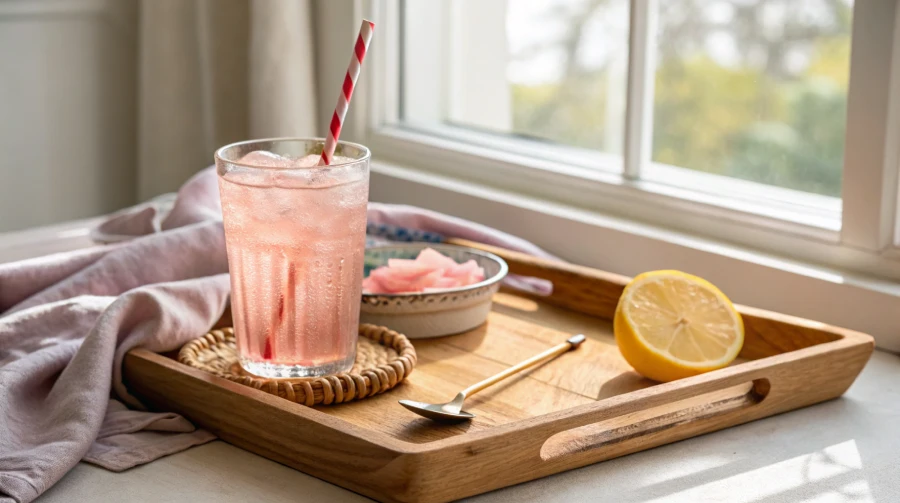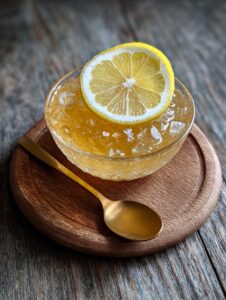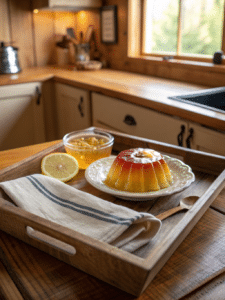
Himalayan pink salt for seniors is gaining popularity as a natural, mineral-rich alternative to processed table salt. Packed with trace elements like magnesium, potassium, and calcium, it’s often recommended for gentle support in hydration, digestion, and overall wellness. But with rising health concerns like high blood pressure and sodium sensitivity, many older adults wonder, is it actually safe and beneficial? In this guide, we’ll break down the real benefits, potential risks, and smart ways to use Himalayan pink salt specifically for seniors. Whether you’re managing health conditions or simply seeking a more balanced lifestyle, this article will help you make informed choices.
In this Article
Key Takeaways: What You Need to Know
Himalayan pink salt for seniors is becoming a go-to alternative for those looking to improve hydration, digestion, and mineral intake naturally. Rich in trace elements like magnesium and potassium, it offers a subtle health boost without the additives found in refined table salt. But like any salt, it must be used in moderation, especially for seniors managing high blood pressure or kidney concerns.
Why Himalayan Pink Salt for Seniors Matters
A Natural Alternative With Nutrient Support
Himalayan pink salt for seniors provides more than just flavor, it contains over 80 trace minerals, including magnesium, potassium, calcium, and iron. These minerals play a key role in maintaining muscle strength, bone health, nerve function, and fluid balance, all of which become more important with age.
Unlike regular table salt, which is stripped of its natural mineral content and often enhanced with anti-caking agents, Himalayan pink salt is unrefined and minimally processed. This makes it a gentler choice for senior diets when used in limited, intentional amounts.
You can explore how this salt is used in drinks like the pink salt trick recipe, or as part of balanced meal ideas like pink salt diet recipe, both suitable for older adults seeking mindful nutrition.
Is It Really Better for Seniors Than Regular Salt?
There’s a common misconception that Himalayan pink salt for seniors is automatically healthier. While it does contain trace minerals, it still contains sodium, about the same amount per gram as table salt. That means it should still be used in moderation.
However, many seniors find it more palatable and less irritating to their system, especially when used in wellness drinks or gentle recipes. Because it lacks added chemicals, Himalayan pink salt can support better hydration and digestion when part of a balanced plan. For those looking to replace highly processed salts, it offers a clean, mineral-rich option.
We’ll now take a closer look at how Himalayan pink salt is formed and why its composition might be more beneficial for aging bodies.
What Is Himalayan Pink Salt?
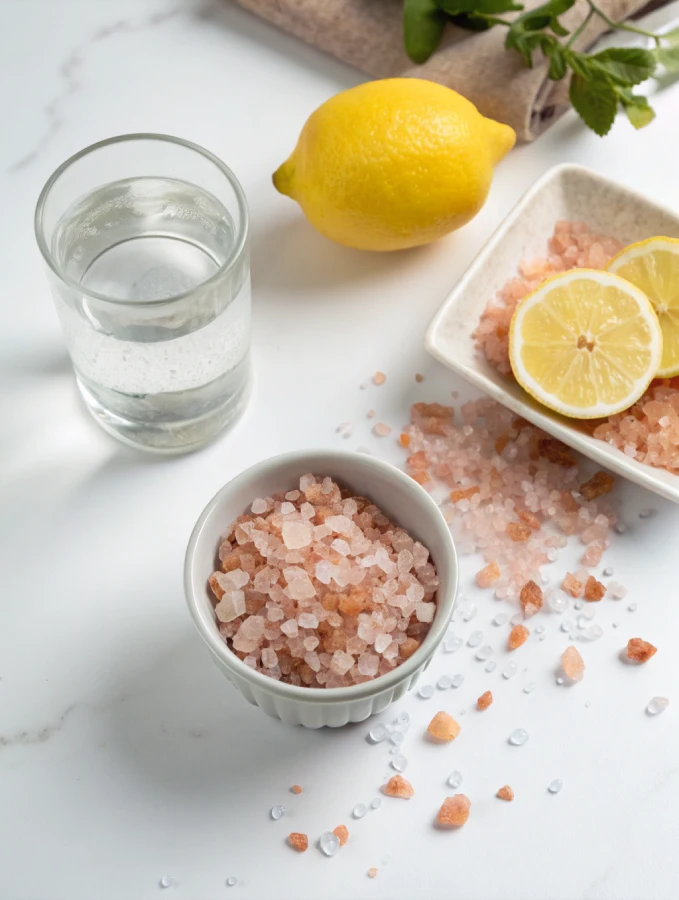
Understanding the Composition
Himalayan pink salt for seniors is harvested from ancient sea salt deposits found in the Himalayan mountain range, primarily in Pakistan. Unlike table salt, which is heavily refined and stripped of minerals, Himalayan salt is minimally processed and often contains up to 84 trace minerals, including:
- Magnesium – supports muscle and nerve function
- Potassium – helps regulate blood pressure
- Calcium – essential for bone strength
- Iron – supports oxygen circulation
These minerals give the salt its signature rosy hue and offer potential health perks, especially for older adults whose bodies may not absorb nutrients as efficiently. While the amounts of each mineral are small, the synergy of these elements in daily use can gently support wellness over time.
It’s worth noting that Himalayan pink salt for seniors still contains sodium chloride, just like any other salt, about 98%, with the remaining 2% made up of those trace elements. That’s why moderation is still essential.
To see how this mineral makeup compares to sea salt or iodized varieties, visit my breakdown in what is the pink salt diet, where I explore ingredient benefits for aging bodies.
Is It Really Better for Seniors?
For many seniors, the switch to Himalayan pink salt isn’t about higher mineral content alone, it’s about purity and digestibility. Table salt often contains additives like anti-caking agents, aluminum derivatives, or synthetic iodine, which may irritate sensitive systems. In contrast, pink salt’s raw form can be easier on the gut and less processed overall.
This makes Himalayan pink salt for seniors a good choice in small amounts for those who are:
- Reducing processed foods
- Managing mild digestive issues
- Seeking natural electrolyte support
- Cutting out artificial ingredients
However, claims that Himalayan salt drastically lowers blood pressure or detoxifies the body are unproven. It’s not a medicine, but it can be a smarter alternative when replacing high-sodium or chemical-laden table salts.
To experience its subtle benefits, seniors often incorporate it through hydration routines like the pink salt trick recipe or cooking methods explained in pink salt recipe.
Himalayan Pink Salt for Seniors – The Real Benefits
Gentle Hydration & Mineral Replenishment
Himalayan pink salt for seniors is widely praised for its ability to support hydration. As we age, our bodies often lose water more quickly and struggle to retain electrolytes. This is where Himalayan pink salt plays a helpful role. When mixed with warm water, such as in the pink salt trick recipe, it helps restore electrolyte balance without relying on sugary sports drinks or artificial mixes.
The minerals in Himalayan pink salt for seniors, especially magnesium and potassium, support the body’s natural ability to regulate fluid retention and prevent dehydration-related fatigue. Seniors who sweat during walks, live in warm climates, or take medications that affect water balance may benefit from adding a pinch of this mineral-rich salt to their daily routine.
Unlike conventional salt, Himalayan pink salt for seniors does not cause the same bloating or water retention when used mindfully. That makes it a safer way for older adults to enjoy improved hydration, especially when paired with lemon and apple cider vinegar in wellness drinks like the Japanese pink salt and ice recipe.
Aiding Digestion, Sleep & Muscle Function
The benefits of Himalayan pink salt for seniors don’t stop with hydration. Seniors frequently experience slow digestion, leg cramps, and poor sleep, often due to low magnesium or electrolyte imbalances. Since pink salt contains natural magnesium and sodium in trace amounts, it can gently stimulate stomach acid production, which aids digestion and reduces bloating.
For sleep, adding a small amount of Himalayan pink salt to warm tea or water before bed may help regulate melatonin and cortisol, the hormones tied to restful sleep. And for those experiencing nighttime cramps, the mineral support offered by Himalayan pink salt for seniors may reduce muscle spasms when used consistently.
These improvements don’t require large amounts, just a ¼ teaspoon daily, as used in the pink salt diet recipe, can make a noticeable difference without elevating sodium levels too much.
Remember, though: the benefits of Himalayan pink salt for seniors come from long-term, mindful use, not from overdoing it. We’ll explore the safe limits next.

Himalayan Pink Salt for Seniors
Ingredients
Equipment
Method
- Add 1/4 tsp of Himalayan pink salt to a glass.
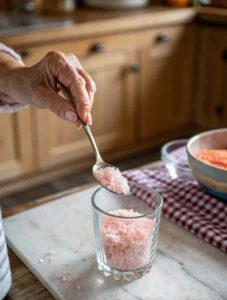
- Squeeze in the juice from half a lemon.
- Pour in 1 tsp of apple cider vinegar.
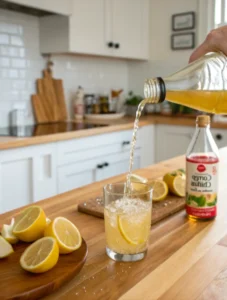
- Add 8 oz warm water and stir well.
- Drink immediately on an empty stomach for best results.

Nutrition
Notes
Tried this recipe?
Let us know how it was!Risks & Who Should Avoid It
Can Seniors With High Blood Pressure Use It?
One of the most important concerns with Himalayan pink salt for seniors is how it affects blood pressure. While it’s true that Himalayan salt contains trace minerals, its sodium content is still very high, nearly identical to regular table salt. Seniors who are managing hypertension or have been advised to follow a low-sodium diet must be cautious.
According to the Centers for Disease Control and Prevention (CDC), most adults, especially those over 60, should consume no more than 1,500 mg of sodium per day. Since just one teaspoon of Himalayan pink salt contains about 2,300 mg of sodium, it’s easy to exceed this limit quickly if used carelessly.
The takeaway? Himalayan pink salt for seniors can be used, but in small, measured amounts. It’s not sodium-free, and its “natural” label doesn’t make it automatically safe for every senior. It should replace other sources of salt, not be added on top of an already high-sodium diet.
If you have concerns about using salt while managing blood pressure, consult your doctor before adding any form, even Himalayan pink salt for seniors, into your meals or wellness routines like the pink salt trick recipe.
Who Should Not Use Himalayan Pink Salt?
Not every senior will benefit from using pink salt. In fact, certain health conditions make it unsuitable or even risky. The following individuals should avoid or limit Himalayan pink salt for seniors:
- Those with kidney disease – extra sodium can worsen fluid retention or interfere with potassium balance.
- Seniors with congestive heart failure – sodium may elevate blood volume, straining the heart.
- Anyone on sodium-restricted diets – always follow your healthcare provider’s specific limits.
- People taking diuretics – salt can interfere with medication effectiveness.
Some also confuse Himalayan pink salt with curing salts or sea salts, which may have added nitrates or processing. If you’re using Himalayan pink salt for seniors, make sure it’s pure and food-grade, not decorative or cosmetic.
A good practice is to try low-sodium alternatives or herbal blends in recipes like those in the pink salt diet while using pink salt as a gentle supplement, not a dietary staple.
The Pink Salt Trick for Seniors
What’s in the Pink Salt Trick Recipe?
The now-famous pink salt trick has been shared as a simple, natural morning drink that can help reduce bloating, improve hydration, and even regulate appetite. For seniors, this tonic may offer gentle support when used as part of a balanced wellness routine.
Here’s what’s typically in the pink salt trick recipe:
- 8–10 oz of warm filtered water
- ¼ teaspoon Himalayan pink salt
- ½ lemon, juiced
- 1 teaspoon raw apple cider vinegar
This mixture is designed to be consumed first thing in the morning, ideally on an empty stomach. For older adults, it may help stimulate digestion, restore morning electrolytes, and support smoother hydration after sleep.
The full recipe and instructions are detailed in my article the pink salt trick recipe, and there’s a helpful variation in the homemade mounjaro recipe with pink salt, which includes extra gut-supporting elements like ginger or probiotics.
Does the Pink Salt Trick Really Work for Seniors?
The effects of the pink salt trick vary, but many seniors report improvements in:
- Morning energy
- Reduced water retention
- Improved digestion
- Less bloating
- Regular bowel movements
Because Himalayan pink salt for seniors is rich in trace minerals like magnesium and potassium, it may support electrolyte balance naturally, without the sugar or dyes found in commercial drinks. The addition of lemon helps with vitamin C and liver support, while apple cider vinegar may boost stomach acid for better digestion.
However, it’s important to remember that the pink salt trick is not a cure-all. It should be seen as a supportive wellness tool, not a replacement for medication or a solution to chronic issues. Seniors with sodium-sensitive conditions should use the pink salt trick only with approval from their healthcare provider.
Still, when used mindfully, the pink salt trick can become a comforting and hydrating morning habit, especially when paired with other healthy practices like the pink salt diet recipe or light movement.
How to Use Himalayan Pink Salt Safely
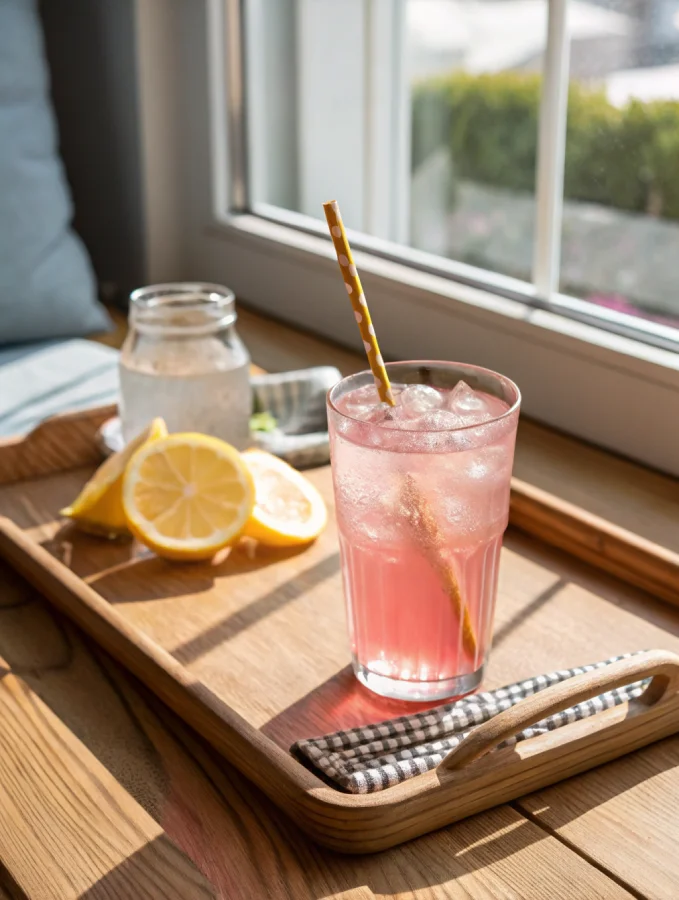
Best Ways for Seniors to Use It Daily
Himalayan pink salt for seniors can be a gentle and effective addition to a wellness routine when used correctly. The key is to integrate it intentionally and in small amounts, not as a blanket substitute for all sodium needs, but as a cleaner, more mineral-rich option in specific uses.
Here are a few safe ways for seniors to use Himalayan pink salt daily:
- In the pink salt trick drink: Try the pink salt trick recipe in the morning to support hydration and digestion.
- Light seasoning on cooked vegetables: A sprinkle of Himalayan pink salt can enhance flavor without excessive sodium.
- In homemade broths or wellness teas: Use it in place of processed bouillon cubes or high-sodium powders.
- As a soak for tired feet or aching muscles: Though not ingested, Himalayan pink salt for seniors can soothe muscle tension topically when added to warm baths or foot soaks.
For more balanced recipe ideas, check out the pink salt diet recipe, designed with older adults in mind.
How Much Himalayan Pink Salt Is Safe?
A critical question surrounding Himalayan pink salt for seniors is how much is too much. While pink salt may contain trace minerals, its sodium content is nearly the same as table salt, about 2,300 mg of sodium per teaspoon.
The American Heart Association recommends no more than 1,500 mg of sodium daily for adults over 60. That means seniors should limit Himalayan pink salt intake to ¼ teaspoon or less per day, especially if they are managing high blood pressure, heart issues, or kidney disease.
To use Himalayan pink salt for seniors safely:
- Always measure, don’t estimate.
- Use it to replace, not add to, existing salt in your diet.
- Avoid pairing it with other hidden sodium sources (packaged snacks, processed sauces, etc.).
- When in doubt, consult a doctor or dietitian.
Seniors looking for low-sodium alternatives may explore herb-based blends or potassium-based salt substitutes, but these should be used carefully and under medical supervision.
Remember: Himalayan pink salt for seniors is most effective when used as a tool for gentle wellness, not as a daily indulgence.
Recipes & Alternatives for Senior Wellness
Senior-Friendly Recipes Using Himalayan Pink Salt
Incorporating Himalayan pink salt for seniors into everyday recipes is a great way to enhance flavor while supporting wellness. Unlike refined table salt, Himalayan salt brings subtle mineral depth to meals, making it ideal for simple, nourishing recipes tailored to aging bodies.
Try these easy, low-sodium dishes featuring Himalayan pink salt for seniors:
- Mineral-Rich Vegetable Broth
Simmer chopped carrots, celery, onions, and garlic in filtered water with ¼ teaspoon Himalayan pink salt. This gentle broth can ease digestion and support hydration in colder months. - Roasted Sweet Potatoes with Pink Salt
Toss cubed sweet potatoes with olive oil, rosemary, and a light sprinkle of Himalayan pink salt for seniors. Roast until golden. This is a potassium-rich side that supports blood pressure balance. - Wellness Morning Tonic
Stir warm water with lemon, apple cider vinegar, and a pinch of Himalayan pink salt, following the pink salt trick recipe. This drink helps start the day with balanced electrolytes and better digestion.
For more balanced meal ideas, the pink salt diet offers clear, senior-focused guidance on incorporating pink salt wisely.
Alternatives for Seniors on Low-Sodium Diets
While Himalayan pink salt for seniors is considered cleaner and more natural, it may still be unsuitable for some individuals on sodium-restricted plans. Fortunately, there are a few alternatives that still offer flavor and function without excess salt:
- Herbal salt-free blends – Dried herbs like thyme, basil, garlic powder, and paprika can add rich flavor with zero sodium.
- Potassium-based salt substitutes – Often found in the health food aisle, but must be used carefully with doctor approval, especially for those on kidney medications.
- Nutritional yeast flakes – A savory, cheese-like topping packed with B-vitamins, offering flavor without salt.
- Citrus & vinegar – Lemon juice or apple cider vinegar can enhance flavor in soups, vegetables, and dressings without any sodium.
Still, if a doctor has cleared you to use small amounts of salt, Himalayan pink salt for seniors remains a great upgrade from processed, bleached salts. Recipes like the pink salt diet recipe or pink salt recipe are great places to start exploring those benefits.
FAQs About Himalayan Pink Salt for Seniors
Who should not use Himalayan pink salt?
While Himalayan pink salt for seniors offers trace minerals and a cleaner alternative to refined salt, it is not suitable for everyone. Seniors with chronic kidney disease, congestive heart failure, or those on strict low-sodium diets should avoid it unless approved by a healthcare provider. Even though it’s considered “natural,” Himalayan pink salt for seniors still contains sodium, which can be harmful if consumed in excess or without medical supervision.
What is the best salt for the elderly?
The best salt for older adults depends on individual health conditions. For many, Himalayan pink salt for seniors is preferred due to its lack of additives, trace mineral content, and natural origin. Compared to table salt, it’s less processed and often better tolerated by sensitive digestive systems. However, those needing very low sodium intake may be better off using herbal salt alternatives or potassium-based substitutes with medical guidance.
Does the pink salt trick recipe really work?
Many seniors find that the pink salt trick recipe, which includes Himalayan pink salt, helps with hydration, digestion, and morning energy. While there’s limited formal research, the anecdotal benefits, especially when starting the day with mineralized water, are widely reported. As long as it fits within daily sodium limits, Himalayan pink salt for seniors in this context can be a gentle, supportive wellness habit. The full recipe is available at the pink salt trick recipe.
Can I take Himalayan pink salt in high blood pressure?
This is a crucial concern. Himalayan pink salt for seniors with high blood pressure should be used very cautiously. While the salt may be more natural and include helpful minerals, it still contains nearly the same sodium level as regular salt. Seniors managing hypertension should not assume Himalayan pink salt is a free pass, it should be limited, measured, and ideally approved by a doctor. Start with very small amounts, such as the ¼ teaspoon used in the pink salt diet recipe, and monitor blood pressure regularly.
Conclusion: Is Himalayan Pink Salt for Seniors the Right Choice?
Himalayan pink salt for seniors offers a mineral-rich, natural alternative to processed table salt, one that may gently support hydration, digestion, and muscle function when used mindfully. Unlike chemically treated salts, Himalayan pink salt contains trace amounts of magnesium, potassium, and calcium, all of which can be beneficial for aging bodies.
But while the benefits are real, so are the cautions. Himalayan pink salt for seniors still contains sodium, and overuse may raise health risks, especially for those managing high blood pressure, kidney conditions, or fluid retention. That’s why balance is everything.
The best way to use Himalayan pink salt for seniors is as a smart replacement, not an extra layer, of flavor and function. Recipes like the pink salt trick recipe, pink salt diet, or pink salt diet recipe show how small, intentional uses can bring wellness benefits without increasing sodium intake dangerously.
If you’re a senior, or cooking for one, consider working Himalayan pink salt into your daily routine with care, and always consult your doctor if you have underlying health conditions.
In the end, Himalayan pink salt for seniors isn’t a miracle cure, but it can be a smart, natural upgrade. Used sparingly, it’s a way to nourish the body while enjoying real food with better ingredients.
Explore more ideas and recipe options on deenrecipes.com, where you’ll find trusted advice and heart-forward meals designed to support every season of life.
